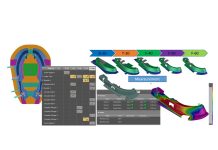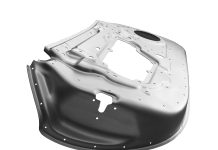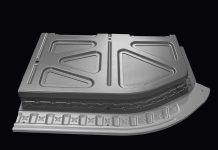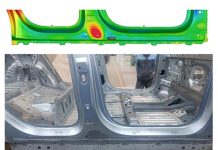Maturing isn’t only for good wine. It also creates software that delivers the latest trends.
It is our belief at AutoForm that the understanding of bringing forming related fabrication processes into virtualization goes hand in hand with providing the customer with a fast and easy-to-use-approach.
 Since the early beginning, AutoForm has dedicated much effort to tailoring our software algorithms towards problem solving, optimizing the entire process, and handling any of the challenges that might be faced throughout the real world engineering of sheet metal stampings.
Since the early beginning, AutoForm has dedicated much effort to tailoring our software algorithms towards problem solving, optimizing the entire process, and handling any of the challenges that might be faced throughout the real world engineering of sheet metal stampings.
So how is all this done? How is a truly successful software really evolved?
There are many facets to this success. Here are a few considerations towards the greater picture.
Starting with the GUI, its most recent releases have reached an outstanding level of maturity, and it easily guides users through the typical workflow of sheet metal forming industry.
Or consider the solver. It is the heart of our software program. The objective of ever constant improvement has always been to increase accuracy whilst decreasing the computation time for generating valuable and reliable results.
True to the company credo ‘forming reality’ AutoForm has devoted significant development resources towards making our simulation results match reality; ever closer with each new software release.
This is Kaizen at its best in the realm of sheet metal forming simulation.
But in order to really ensure a permanent process of evolving the code´s capabilities towards a defined target corridor the company runs test, and calibrates their developments, in collaboration with selected customers in the form of well-defined pilots and joint venture development projects.

It should also be pointed out that our company participates frequently in benchmark activities – such as NUMISHEET – and proves itself under the scrutiny of third party test driven contests. The results are rewarding in terms of learning and our software’s performance by all accounts has been outstanding.
Last, but not least, we actively screen publications in scientific journals to stay ahead of the game.
Driven by such a diverse range of feedback the company moves ahead by allocating resources for further code modification for including those latest ideas in upcoming releases.
Then you have to consider that novel materials, such as UHSS, and their processing technologies are constantly emerging onto the scene. Facing these two issues means that we are simultaneously challenged to adapt or at times must completely rethink our modelling methods and algorithms.
The outcome of this process of evolution and adaption could be, for instance, the creation of new alternative draw bead descriptions or even better element formulations.
But the excellence of AutoForm is not claimed, but rather it is widely acclaimed.
Here is a nice example review from Stadnicki and Wróbel, who after an analysis of options for the numerical prediction of springback behavior of a real stamped part stated:
“The results obtained from AutoForm program are characterized by a smaller range of deviations of simulation results from the reality and a greater percentage share of the areas of the model with the smallest deviation from the actual stamped part. The comparison of the numerical effectiveness of the solvers shows that AutoForm definitively ensures a shorter time of analysis.”

In this regard, AutoForm is particularly proud to see others recognize our efforts, proving that although our efforts to simulate real-life forming processes become ever more detailed AutoForm’s computation times are still well below other competitive systems.
Ultimately and to conclude, we at AutoForm attribute all these successes to the joint efforts of the whole organization, a union of many faces working together to beat any challenge.
Stay tuned for more, this blog post is but an introduction to stories we’ll visit in detail soon.
Have your say, leave a comment. We enjoy your participation.














Just Rated for this awesome post.